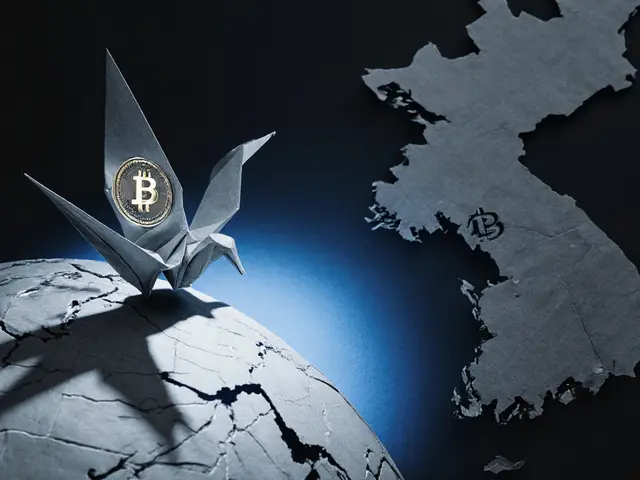Blockchain Node Explorer
Select a node type below to learn about its role, requirements, and features.
Full Node
Stores complete blockchain and validates all transactions
Light Node (SPV)
Stores only block headers, relies on full nodes for validation
Miner Node
Solves cryptographic puzzles to create new blocks
Key Features
Requirements
Did You Know?
As of 2025, Bitcoin has approximately 10,000 active full nodes worldwide, contributing to network resilience and decentralization.
When you hear the word "node" in the context of blockchain, you might picture a fancy server farm or a mysterious piece of hardware. In reality, a node is simply a computer-sometimes a laptop, sometimes a dedicated server-that plugs into a blockchain network and helps keep the system running. Blockchain nodes are the backbone of decentralization, providing the storage, validation, and communication that let the ledger stay trustworthy without any central authority.
What Is a Blockchain Node?
Blockchain node is a computer or device that participates in a blockchain network by storing a copy of the ledger and communicating with other nodes over a peer‑to‑peer (P2P) network. Each node runs core software that understands the protocol’s rules, allowing it to verify transactions, propose new blocks, and relay information across the network.
Because every participant runs a node (or connects to one), the network becomes resilient: there’s no single point of failure, and no one party can rewrite history without convincing the majority of nodes.
Core Functions of Nodes
- Ledger maintenance: Nodes store the blockchain’s immutable record, from the genesis block to the latest block.
- Transaction validation: Incoming transactions are checked against protocol rules (e.g., signature verification, double‑spend protection).
- Block propagation: When a new block is created, nodes broadcast it to peers, ensuring the entire network stays in sync.
- Consensus participation: Depending on the node type, it may help reach agreement on the next block via the network’s consensus algorithm.
- Network relay: Nodes forward data (transactions, blocks, status messages) to keep the P2P mesh alive.
Types of Nodes and Their Roles
Not all nodes are created equal. Blockchains define several categories, each with distinct responsibilities and resource demands.
| Node Type | Storage Required | Typical Role | Hardware Needs |
|---|---|---|---|
| Full Node | Entire blockchain (e.g., 500GB for Bitcoin as of 2025) | Validates every transaction and block; provides the highest security | Decent CPU, 8GBRAM, 1Gbps internet |
| Light Node (SPV) | Headers only (few MB) | Relies on full nodes for verification; suitable for mobile wallets | Low‑end device, 2GBRAM, modest bandwidth |
| Miner Node | Full blockchain + mining software | Solves proof‑of‑work puzzles, proposes new blocks, earns rewards | Specialized ASIC/GPU rigs, high power, cooling |
The table above summarizes the most common node flavors. Full nodes give you maximum trust, light nodes let you participate with minimal resources, and miner nodes focus on creating new blocks while also keeping a full copy of the ledger.
Full Node
Full node is a node that stores the entire blockchain and independently validates every transaction and block according to consensus rules. Running a full node means you don’t have to trust anyone else; you verify the chain yourself.
Full nodes are essential for network security because they act as the ultimate source of truth. If a majority of miners tried to push an invalid block, full nodes would reject it, preventing a chain split.
Light Node (SPV)
Light node, also known as a Simplified Payment Verification (SPV) node, stores only block headers and queries full nodes for proof that a transaction is included in a block.
This design suits mobile wallets and IoT devices that can’t afford the storage or bandwidth of a full node. While light nodes don’t validate every rule, they inherit security from the full nodes they trust.
Miner Node
Miner node is a full node that also runs mining software to solve cryptographic puzzles, create new blocks, and receive block rewards. Miner nodes are the engines of proof‑of‑work blockchains like Bitcoin.
Mining requires specialized hardware-ASICs for Bitcoin or powerful GPUs for Ethereum Classic. The economic incentive (block reward + transaction fees) motivates participants to keep the network robust.

How Nodes Reach Consensus
Consensus algorithms are the rules that tell nodes how to agree on the next block. Different blockchains use different mechanisms, but the underlying idea is the same: nodes compare their copies of the ledger and adopt the version that follows the protocol.
Consensus algorithm is a set of rules (e.g., proof‑of‑work, proof‑of‑stake, Byzantine Fault Tolerance) that governs how nodes validate and finalize new blocks. In Bitcoin, proof‑of‑work means the miner who solves the hash puzzle first wins the right to add the block. In proof‑of‑stake systems, validators are chosen based on the amount of stake they lock up.
All nodes communicate over a peer-to-peer network, a decentralized mesh where each node connects directly to a handful of peers and relays messages across the entire network. This structure eliminates a central server and spreads information quickly, even if some nodes go offline.
Key Blockchain Data Structures
The ledger is the collective term for the chain of blocks that records every transaction ever processed. Each block contains a batch of transactions, a timestamp, a reference to the previous block’s hash, and a nonce (in PoW systems).
The very first block, known as the genesis block, is hard‑coded into the protocol. All subsequent blocks link back to it, forming an immutable chain that cannot be altered without re‑computing every following block-a computationally infeasible task for large networks.
Setting Up Your Own Node
Running a node is more approachable than it used to be. Here’s a practical checklist for a typical Bitcoin full node:
- Acquire hardware: a modern desktop or a dedicated mini‑PC with at least 1TB SSD.
- Install the official client (e.g., Bitcoin Core) from the project’s website.
- Allow inbound TCP port 8333 on your router to enable peer connections.
- Sync the blockchain: the client will download the full history, which may take days.
- Keep the node online 24/7 to help the network and improve your own privacy.
If you prefer a lighter footprint, switch to an SPV wallet like Electrum, which only downloads block headers.
Benefits and Challenges of Running Nodes
- Security and privacy: Full nodes verify everything locally, reducing reliance on third‑party services.
- Network health: More nodes mean higher decentralization, making attacks harder.
- Economic incentives: Miner nodes earn rewards; staking nodes in PoS networks earn interest.
- Resource demands: Storage, bandwidth, and electricity costs can be significant, especially for mining.
- Technical maintenance: Software updates, firewall configuration, and hardware wear require attention.
Real‑World Examples
Bitcoin still relies heavily on full nodes: as of 2025, there are roughly 10,000 active Bitcoin full nodes worldwide, spread across dozens of countries. Ethereum, after moving to proof‑of‑stake in 2022, now has validator nodes that stake 32ETH each to participate in consensus.
Beyond cryptocurrencies, supply‑chain platforms like VeChain use permissioned nodes to track product provenance, while healthcare projects such as MedRec use lightweight nodes on mobile devices to give patients control over their records.
Future Trends
Node software is becoming modular. Projects like Cosmos SDK let developers spin up custom zones with tailored node types. Meanwhile, edge‑computing initiatives aim to run ultra‑light nodes on smartphones, bringing decentralization to billions of users.
Frequently Asked Questions
Do I need a full node to use Bitcoin?
No. Most users rely on lightweight wallets that connect to full nodes operated by others. However, running your own full node gives you full validation power and better privacy.
What hardware is required for a miner node?
For Bitcoin, ASIC miners like the Antminer S19 Pro dominate; they consume several kilowatts and need proper cooling. For Ethereum before the merge, high‑end GPUs were common, but PoS eliminated mining.
How does a light node verify a transaction?
It requests a Merkle proof from a full node. The proof shows that the transaction is included in a block whose header the light node already trusts.
Can I run a node on a home router?
Some lightweight nodes can run on a Raspberry Pi or similar single‑board computer, which can be attached to a home router. Full nodes usually need more storage and CPU than a typical router can provide.
Why does node diversity matter?
Geographically and topologically diverse nodes make it harder for an attacker to isolate or overwhelm the network, enhancing censorship resistance and fault tolerance.





Marie Salcedo
Great overview! I love how you broke down each node type in a clear way. It really helps newcomers see why full nodes are the backbone of security. Keep sharing these kind of guides, they make the tech feel more approachable.
Latoya Jackman
Thank you for the detailed explanation. The information is accurate and well‑organized.
Megan King
This is super helpful, thx! I especially liked the part about light nodes on phones – makes me wanna try it out. Your guide feels like a friendly mentor walking us through the steps.
Rachel Kasdin
America’s blockchain future depends on us building more domestic full nodes now.
Keith Cotterill
One must acknowledge the profound epistemological implications of decentralization; indeed, the node architecture epitomizes a paradigm shift in trust structures-an elegant convergence of cryptographic rigor and socio‑economic theory!!! However, the layperson often overlooks the subtle nuances of consensus mechanisms, thereby perpetuating a myopic view of the ecosystem.
Noel Lees
Exactly! 🎉 Running a full node is like planting a tree that gives shade to the whole network. Keep the momentum going, and more people will join the cause! 😊
Raphael Tomasetti
Agreed. Full nodes act as validators, ensuring Byzantine fault tolerance across the P2P mesh.
Jenny Simpson
While the guide is tidy, it glosses over the grim reality that most users never run a node because of bandwidth tyranny. The romance of decentralization is often just a myth wrapped in glossy UI.
Sabrina Qureshi
Wow!!! That’s an audacious claim!!! I’m shocked!!!
CJ Williams
Totally feel you!!! The deep philosophical angle is mind‑blowing 🙌. It’s true that many miss the subtlety-let’s spread the word so more peopel understand the beauty of the system!!! 😃
mukund gakhreja
Sure, because planting trees is exactly what blockchain needs.
Michael Ross
The explanation of validator roles clarifies network resilience.
Lana Idalia
Actually, the supposed “myth” you mention is well‑documented; scholarly papers have proven that incentives align node operators with network health, dispelling any romanticized notion of tyranny.
WILMAR MURIEL
Reading this article reminded me of why I first fell in love with blockchain technology. The way nodes interconnect is reminiscent of a living organism, each cell performing its function without a central brain. Full nodes, in particular, serve as the immune system, constantly scanning for anomalies and rejecting malformed blocks. Light nodes, on the other hand, act like sensory nerves, gathering information while conserving energy, which is crucial for mobile adoption. Miner nodes are the muscular heart, pumping new blocks into the chain with relentless vigor. The consensus mechanisms bind these components together, ensuring that the network reaches agreement even under adversarial pressure. By maintaining a copy of the entire ledger, full nodes provide transparency that is impossible to achieve in traditional databases. Moreover, they empower users to verify transactions independently, dramatically reducing reliance on third‑party custodians. The data structures-blocks, Merkle trees, and transaction graphs-are elegantly designed to enable efficient verification. Running a node also contributes to network decentralization, which is a key defense against censorship. While the hardware requirements may seem daunting, advances in SSD technology and bandwidth have lowered the barrier to entry. Community initiatives, like volunteer node programs, further democratize access. The educational value of operating a node cannot be overstated; it offers hands‑on experience that deepens understanding of cryptography and networking. As the ecosystem evolves, we see emerging hybrid node models that blend the benefits of full and light nodes. In sum, nodes are the unsung heroes that keep the blockchain ecosystem robust, resilient, and truly decentralized.
carol williams
Honestly, anyone who reads this and still doesn’t grasp the gravity of nodes is missing the point entirely. The article barely scratches the surface, and you’ve just reiterated the obvious while ignoring the deeper governance implications that truly matter.
jit salcedo
What they don’t tell you is that the push for more full nodes is a smokescreen orchestrated by the elite to mask the real agenda-centralizing control through hidden governance layers while pretending we’re all getting freedom. It’s a colorful charade that keeps the masses complacent.
Fionnbharr Davies
Let’s remember that productive dialogue thrives when we focus on shared goals rather than descending into polemics. Embracing diverse perspectives can only strengthen the community’s resilience.
Narender Kumar
In the most solemn of terms, the alleged machinations you propose demand scrutiny, yet we must approach such proclamations with the utmost decorum and evidentiary rigor, lest we descend into baseless theatricality.